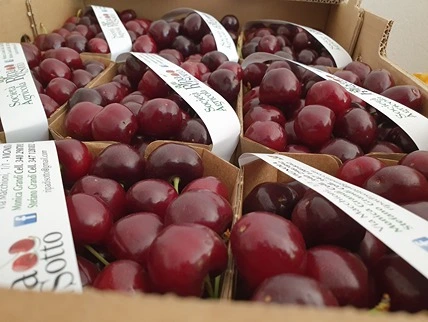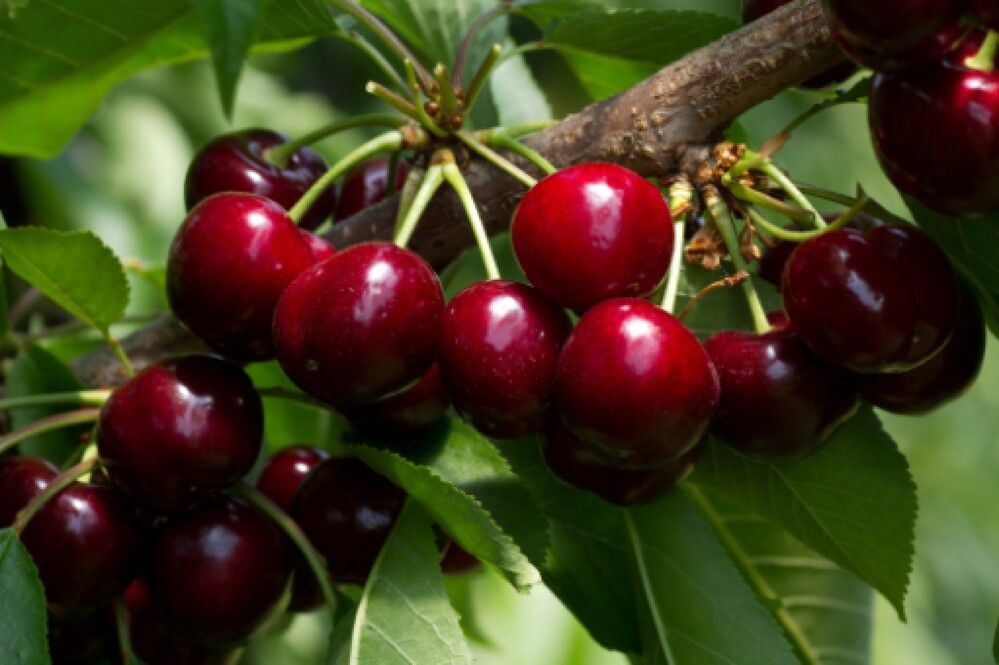A recent study has shown that post-harvest treatment with phenyllactic acid (PLA), combined with modified atmosphere packaging (MAP), can enhance the quality and shelf-life of cherries. Specifically, the study focused on “Youyi” and “Tieton” varieties. The rapid decay of cherries (weight loss, mold development, aroma degradation) poses a challenge for the production chain.
The research, conducted by Chinese scientists, proposed a more sustainable and practical approach using phenyllactic acid to extend the storage life of cherries while maintaining excellent organoleptic properties.
The results highlighted that a concentration of 12 mmol/L of phenyllactic acid (PLA) is effective in reducing the cherries respiration rate and in controlling oxygen and carbon dioxide concentrations inside the packaging. These effects contribute to preserving fruit quality, slowing down deterioration processes, and maintaining commercial standards even after 60 days of storage at 1°C.
PLA treatment significantly reduced fruit weight loss and improved firmness retention, two essential factors for marketability. In terms of total soluble solids (TSS) content, the treated fruits maintained higher values compared to the control samples, resulting in a more appealing product.
The visual appearance of cherries was also positively affected by phenyllactic acid treatment. Brightness and chroma, parameters that determine the vibrant and saturated color of the fruit, were preserved in the treated samples. However, the study found that excessively high PLA concentrations, such as 24 mmol/L, could cause aesthetic damage to the fruit’s surface, emphasizing the importance of using the optimal dosage to maximize benefits without compromising quality.
Another noteworthy aspect of the study is PLA’s ability to positively influence cherries’ aroma. Key aromatic compounds, such as benzaldehyde and (E)-2-hexenal, responsible for the fruit’s floral and fresh notes, were better preserved in treated samples compared to untreated ones.

Conversely, undesirable volatile compounds, such as ethanol and acetaldehyde, typically associated with fermentation processes, were found in lower concentrations in cherries treated with PLA. This result highlights the potential of PLA treatment to maintain a pleasant and authentic aromatic profile.
The study also demonstrated that phenyllactic acid helps maintain titratable acidity (TA), an important parameter for balancing the flavor of cherries. During storage, acidity decreased less in treated fruits compared to the controls, contributing to a more balanced taste. This is particularly important for cherries, whose organoleptic qualities depend on the balance between sugars and acids.
In conclusion, treatment with phenyllactic acid (PLA) at a concentration of 12 mmol/L has proven to be a promising method for improving cherries post-harvest preservation. When integrated with established technologies such as modified atmosphere packaging, PLA not only extends the shelf-life of cherries but also preserves the fruit’s aesthetic, structural, and aromatic qualities, while reducing waste.
This study introduces novelty for the horticultural industry, with potential applications for other perishable fruits, helping to meet the growing consumer demand for quality and freshness.
Source: Yang, Y., Li, A., Guo, M., Kong, Y., Zhang, J., Wang, J., Sun, S., Li, X., Zeng, X., Gong, H., & Fan, X. (2024). Improving the storage quality and aroma quality of sweet cherry by postharvest 3-phenyllactic acid treatment. Scientia Horticulturae, 338, 113661. https://doi.org/10.1016/j.scienta.2024.113661.
Image: SL Fruit Service
Andrea Giovannini
University of Bologna (IT)
Cherry Times - All rights reserved













